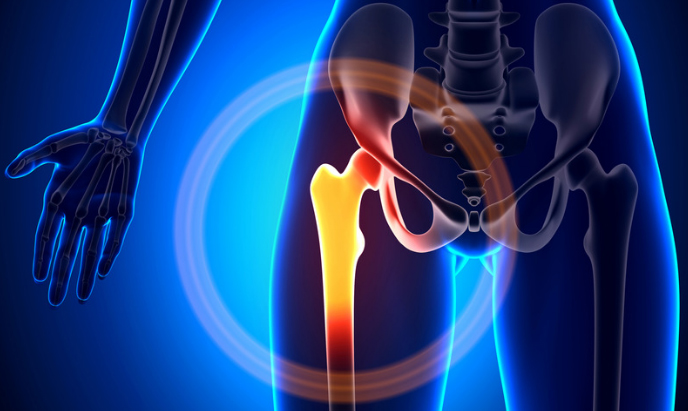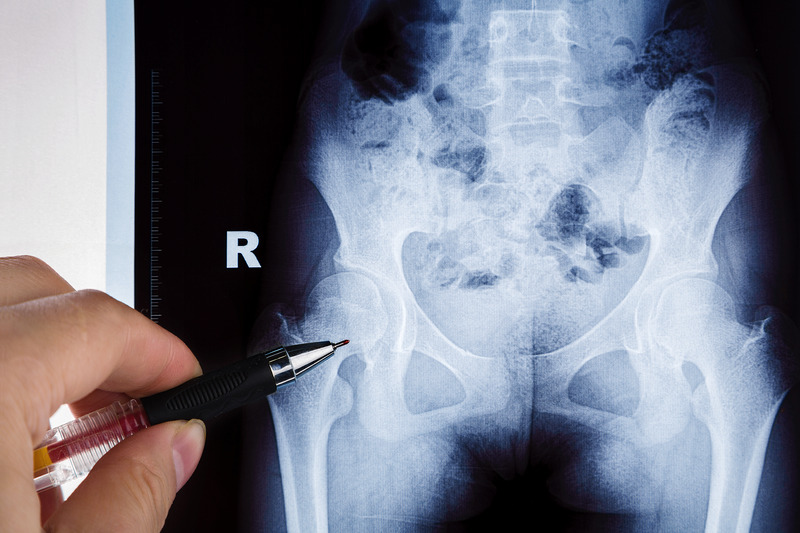
Hip Preservation in Columbia, South Carolina
The preferred method for performing most joint replacement operations is in the outpatient setting, using hip preservation.
Midlands is the United States preferred practice for Hip Preservation Procedures. We have pioneered outpatient joint replacement surgery at Midlands Orthopaedics and Neurosurgery. We began in 2012 as one of the first groups in the country and have performed thousands of joint replacements and hip surgeries of all kinds in the last 8 years. We have now perfected this to the point that most of our joint replacements are done as outpatient procedures. Local patients go home several hours after the operation and follow up with me in the office one week later. Out-of-area patients go to a hotel instead, where they are seen the next morning before they begin their drive home. Patients flying home are advised to spend a second night in the hotel before flying. Only patients with more complex operations, certain serious comorbidities, or those with uncooperative insurance plans are still done at the hospital.
What is Hip Preservation?
Hip preservation is a surgical procedure that delays or prevents the onset of arthritis and the need for a hip replacement in the future. Typically, the procedures were performed on older adults.
Hip arthroscopy, periacetabular osteotomy, surgical hip dislocation, and femoral osteotomy are all hip preservation procedures. These techniques can also be used to treat any secondary pathology, such as a labral tear or cartilage injury, that may have developed.
Numerous hip conditions that could be helped by hip preservation procedures began during childhood or adolescence. Certain conditions, such as hip dysplasia, are screened for at an early age in populations at risk. For some patients, however, the condition may not be diagnosed until later in life. Similarly, conditions such as femoroacetabular impingement (FAI) typically develop slowly over time, beginning in adolescence, and patients may not experience symptoms until their second or third decade.
Not all hip disorders necessitate surgical treatment. Activity modification and targeted physical therapy may lead to substantial improvement for some.
The following conditions may benefit from hip preservation:
- Hip dysplasia, from infants to adults
- Femoroacetabular impingement (FAI)
- Labral tears
- Perthes disease
- Slipped capital femoral epiphysis
- Avascular necrosis
- Post-traumatic hip deformity

What Should I Expect from an Outpatient Joint Replacement Procedure?
Most patients who have had one procedure done at the hospital and another as an outpatient much prefer the latter. The outpatient method is safe, easy, friendly, less expensive, and keeps you from getting a hospital infection. One requirement to qualify for outpatient surgery is to bring a capable and responsible caretaker (family or a close friend at least 18 years of age) with you.
Our Hip Preservation Experience
30 years ago, it was routine to keep patients in the hospital for 2 weeks and then send them to a skilled nursing center for another 2 weeks. Now we perform the surgery outpatient, with the patient going home several hours after surgery. Usually, patients are off narcotics and can drive 3-5 days and return to office work in 1-2 weeks. Most of the country is following our lead and the process has accelerated during the COVID pandemic. What has led to this development? There are numerous factors, both traditional, clinical, and economic, that are responsible.
Patients who get a joint replacement usually have to stay in the hospital for three main reasons:
- managing blood loss
- controlling pain
- monitoring those with major medical comorbidities
For years, no joint replacement procedure required transfusions, even after bilateral surgery, and pain control was so good that few needed anything but oral medication. Our company owns a surgical center where we have been performing outpatient orthopedic surgery of all types very safely and cost-effectively for years. In 2012, we made an agreement with one of our major insurers to begin moving joint replacement and spine surgery to our center. Over time, we have continued to gradually expand the indications for outpatient surgery and have compiled an excellent safety and patient satisfaction record. We are now in charge of the whole patient experience and no longer have to rely on a hospital partner that is inefficient and charges too much to make changes.
Improved minimally invasive surgical technique, careful preoperative preparation, tissue sealers, tranexamic acid, platelet concentrate with thrombin, irrigation with epinephrine solution, and selective use of cell savers have all contributed to eliminating the need for transfusion. Only a few years ago, the national transfusion rate for joint replacement was in excess of 30%. Mine has been zero for over 10 years.
The physicians at Midlands Orthopaedics & Neurosurgery will ensure the most comprehensive approach to help find relief for you in the quickest way possible.

Pain Management for Joint Replacement and Hip Preservation
Pain management has also dramatically improved in the last two decades. Multimodal pain management starting preemptively with a combination of maximum-dose Tylenol, anti-inflammatory meds, ice therapy, platelet concentrate, long-acting local anesthetic injections, and oral slow and fast-release narcotics has totally changed the surgical experience for patients. Using short-acting blocks (spinal, lumbar plexus, or femoral-sciatic) that wear off quickly after the surgery means patients usually do not experience much pain in the process. While the anesthetic wears off in the recovery room, the nurse gradually dials in any necessary narcotic. With an anesthetic block, this transition out of surgery is usually quite smooth, and this is the last time injectable narcotics are required. Patients are able to walk out of the surgery center and ride home very comfortably after several hours. Narcotics are usually only required for 3–5 days for hips and 2-3 weeks for knees.
Patients with certain comorbidities can sometimes be accommodated with an additional overnight observation period in our center. If the comorbidities are too severe the surgery must still be done in hospital.
first
Your content goes here. Edit or remove this text inline or in the module Content settings. You can also style every aspect of this content in the module Design settings and even apply custom CSS to this text in the module Advanced settings.
Handling Infections After Joint Replacement
Rarely, infection can still spread to the joint at any time in your life from an infection elsewhere in the body through the bloodstream. Infections that occur after 1 year are late infections; they are NOT perioperative. They are not caused by the operation itself and are not under the control of the surgeon. Fortunately, they are rare.
We focus on the 3-month and 1-year perioperative infection rate because the surgeon has control of this. The 3-month perioperative infection rate at our center is well below 1%. You can find online data for any hospital but not by surgeon. From scientific studies we estimate that the national benchmark 1-year infection rate is approximately 2.5% and growing. Hospitals and surgery centers don’t collect 1-year data. Our personal rate for the last 10 years has been 0.1%. One factor that allows me to have a 1-year infection rate 25 times lower than the national benchmark is the fact that this surgery is performed mostly at a surgery center and not a hospital where sick patients bring in lots of bacteria.
Infection Prevention
There are too many things that affect the rate of infection for us to go into detail here. You can look at databases to get an idea of how often infections happen at different hospitals, but you can’t find out how often infections happen with a specific surgeon. Generally, smaller hospitals with fewer severely ill patients and outpatient surgery centers have fewer resistant bacteria floating around.
If common minor wound problems are not managed correctly, a deep infection can result. When a deep infection occurs, implant removal is frequently required to cure it.
An individual surgeon’s infection rate is much more important to know than the rate in a given hospital. But most surgeons don’t even keep such data, much less publish it. Over many years, we have developed a detailed protocol to prevent infection. Because of this, our infection rate for primary hip resurfacing, which has been published in peer-reviewed journals, is 0.2%. Furthermore, we have managed to cure these infections without a single loss of implant over the last 7 years.
Cost of Joint Replacement
Hospitals have mostly been able to create near-monopoly positions in most markets, which they have used to raise prices by a lot. At the same time, government rules (the “certificate of need,” or “CON”) make it nearly impossible for anyone to build a new independent hospital to challenge the hospital monopoly. But the advancements that have allowed us to transition major operations to an outpatient center have allowed independent (not hospital-owned) surgeon groups like ours to challenge this hospital stranglehold.
As this trend accelerates, we hope that more surgeons are lured out of hospital employment and start their own outpatient programs. Also, because of CON rules, it is difficult but not impossible to build new outpatient centers. But, as surgeon-owned outpatient centers proliferate, the cost of surgery will go down while the quality rises, as we have shown in our center.
Insurance Coverage Information & Example
Follow-up Protocol
It’s important to us that all our patients are functioning well. No joint replacement operation is perfect; complications and failures do occur. Please let us know about all major complications and failures post-procedure so that we can help you. It also helps us improve our methods for future patients.
On several occasions, patients have had incorrect treatment recommended by other surgeons who are misinformed about resurfacing; therefore, please consult with us before you have another surgeon treat your resurfaced hip. Our published success rate with revision of hip resurfacing at 6 years is 96%. This is almost as good as primary surgery. In contrast, many major centers report high failure rates for these revisions (Oxford has published a 50% failure rate for adverse wear-related revisions).
The best medical standard is to perform routine follow-up on all joint replacement patients. Many failure modes cause significant symptoms. But some problems are relatively silent. Due to our extensive experience, we have developed surveillance protocols to discover problems early, as well as, the knowledge to properly diagnose the causes of problems.

